
The little Cannon that could: The clever cameos of Esma Cannon
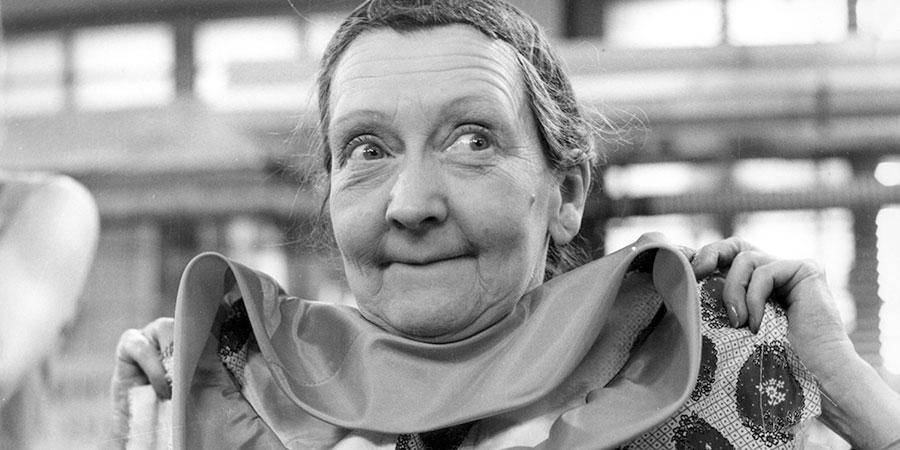
It is striking how memorable a stray grain of detail can be. It might be something in the background of a much-played song, or in a corner of a famous painting, or in a passage of a familiar novel, but, even though it was not meant to linger, it still lodges itself somewhere in the memory, an ingredient simply too quirkily individual to pass without leaving an impression. Esma Cannon is a little like that. Most of her contributions to British comedy, during the Fifties and Sixties, were cameo performances of the blink-and-you'll-miss-it variety, and yet they crept into our consciousness and stayed there, as a sight, a sound and an impish spirit that stubbornly refuses to be erased.
Hear her name and you may well claim never to have heard of her; read her credits and you may well still insist never to have seen her; and then the description of her is given, and, all of a sudden, there she is again, in your head, a vivid presence you now know you cannot ever forget.
There she is as the sweet-natured little secretary Miss Cooling in Carry On Regardless, doing her best to keep the company afloat and under control (CUSTOMER: 'Do you provide substitutes?' COOLING: 'No! This is a respectable firm!'). There she is as the blissfully oblivious Emily Broughton, smiling through every spooky scare in What A Carve Up ('Oh, I do think that candlelight is so much nicer!'). There she is as the binge-drinking Bridget in Carry On Cruising, perched on a bar stool knocking back neat vodka ('Central heating all to myself!').
You always noticed her, even when you weren't supposed to notice her. It did not matter how small the role was, or how few lines she was given, or even if she didn't receive a credit for her performance. She stole scene after scene, for years and years, and then, without any warning or explanation, she stole away herself and disappeared from view.
So where did she come from, and where did she go to, and what made her so much more memorable than her scripts, or even she, ever expected her to be? It is an intriguing little story.
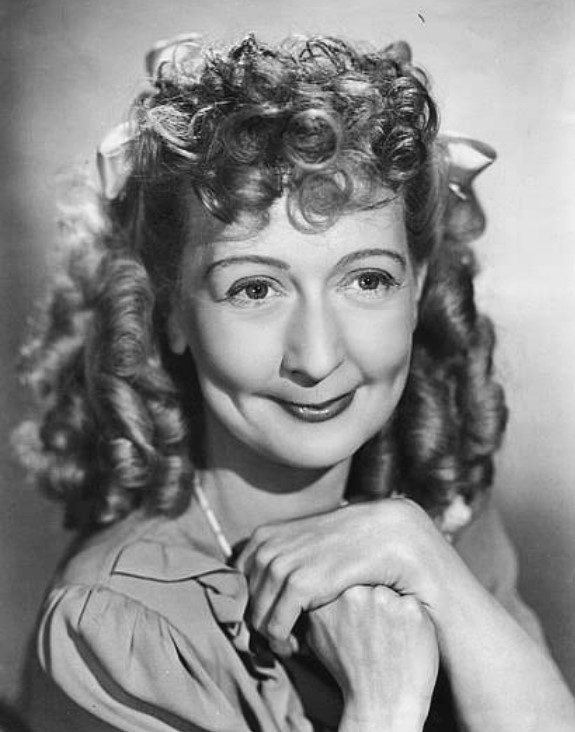
Contrary to her on-screen image as a rather posh Englishwoman, she was actually an Australian: born Esma Ellen Charlotte Cannon at Ruthsew Street, Randwick - a suburb in the Eastern Suburbs of Sydney in the state of New South Wales - on 27th December 1905. Her father, Michael, was a book-keeper; her mother, Grace, a home-maker (an elder sister, Veta, would pass away prematurely in her early twenties).
Esma appears to have been a precocious entertainer, earning her first mention in print in 1911 when barely more than a toddler. A song and dance routine for the Commonwealth Eisteddfod at the YMCA in Sydney was reported as having caught the eye of Lady Gertrude Denman, the wife of the country's current Governor-General, who invited the young girl to sit with her for the remainder of the occasion.
By December 1914, still not quite nine but already a star graduate of Minnie Everett's school of dancing and a regular participant in musical-comedy productions staged by J. C. Williamson and Tate, she was making headlines in Sydney's Sunday Times for the impact she was having during rehearsals for a local adaptation of Seven Little Australians at the city's Palace Theatre. Onlookers had been shocked, it was said, 'by the talent displayed by little Esma Cannon, a tiny mite selected to play the part of Baby'.
Baby, the report added, was 'a small part only, and it was thought that it would come just within the capabilities of little Miss Cannon. To everyone's surprise, however, before half-a-dozen rehearsals had passed, the young lady knew every part in the piece, and was quite capable of speaking the lines of everyone in the show. The stage manager reckons that by the time 26th December comes around, Miss Cannon will be able to hustle him out of his job and take command herself'.
Once the show had begun its run, she would go on to win plenty of critical praise for her performances. One review, for example, remarked on how she 'astonishes the audience by playing The Wearin' of the Green quite charmingly on a violin very little shorter than herself'.
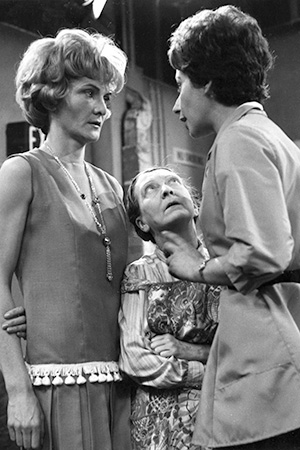
She would never grow much taller. The highest that she reached as an adult was 4ft 9inches, with her weight remaining stable at just over six stones. The result was that, regardless of her acting skills, the leading roles tended to be denied her ('I was so tiny,' she later reflected, 'I was playing children's roles even when I was an adult'), and from her teenage years onwards she was considered as best suited to more specialist styles of character acting.
At least such prejudice in terms of casting did nothing to diminish her appeal as an up-and-coming performer. So meticulous was she in preparation for each role, so disciplined in her attitude to each job in hand (she always went straight from her arrival at a theatre to the dressing room, put on her costume, always refused make-up and was unfailingly ready to walk directly on to the stage) and so fresh, intelligent and original in her performances, that she was rarely out of work during the next half a century.
It is so far uncertain as to when, and why, Esma Cannon decided to emigrate to Britain, but we do know that she met the influential British actor and impresario Percy Hutchison (below) in the summer of 1928 when he took a production of The Laughing Optimist to Sydney for the season as part of a two-year international tour. According to her own later account, via an Australian magazine interview in 1963, Hutchison (who not only managed his own company of actors but also owned the rights to many plays and had control of several English theatres) saw her perform during his stay there and was sufficiently impressed that he told her 'he'd give me a part in a play whenever I went to England - so I decided I would like that part'.
Hutchison returned to England early in January 1929 and went straight into another provincial tour with a play entitled Looking For A Wife (or The Love-Lorn Lady). There was no mention of Esma Cannon among the cast. She would remember the part that Hutchison promised her as being in a play called Misadventure, but the first mention of her in a Hutchison production appears to have been for a one-act comedy entitled Mrs Hilary Regrets, coupled with a longer play called The Luck Of The Navy, opening at the Lyceum Theatre in Sheffield in the week commencing Monday 3rd March 1930.
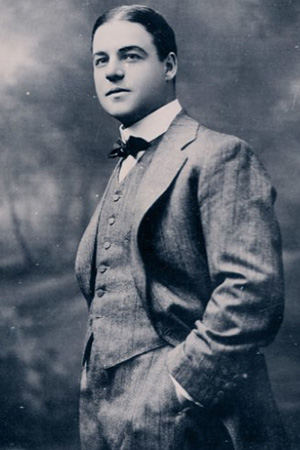
Hutchison had actually been touring these two particular plays since the start of that year, so it is possible that Cannon could have joined the cast at an earlier point, but the evidence certainly suggests that she (along with her mother) arrived in the country at some stage between late 1928 and the end of 1929. She herself would later say that, after making her debut for the impresario, he continued to employ her: 'I was lucky enough to go straight into another play, which went well, and from there to another and so on'.
More performances did indeed soon follow in quick succession, as part of the touring company led by Hutchison, at venues that included the Royal Court in Liverpool, the Prince's in Bradford, the Pier Theatre in Eastbourne, His Majesty's in Aberdeen and the Theatre Royal in Hanley. They were mainly comedies, and her own roles tended to be minor ones, but Hutchison clearly trusted her talent.
Already attracting glowing notices for what one critic described as her 'gloriously funny' and 'unusually clever' character acting (as well as a certain amount of curiosity for being 'one of the smallest women on the English stage'), she soon moved to London, settled into an apartment in Paddington (shared, it appears, with her mother), and remained a valued member of Hutchison's West End-based company, not only to continue performing (in dramas, comedies and musicals) but also to pick up practical experience on provincial tours as a stage manager, set designer and assistant producer. Sometimes dying her dark hair blonde in a bid to branch out and play more youthful and romantic roles, she still found herself specialising (whether she wanted to or not) in eccentric servants and older 'spinsterish' figures, simply because she was so impressive at making them seem so sympathetic and, when required, quirkily charming.
Gradually, however, she appears to have grown disenchanted with performing (or at least with the roles that she was limited to performing) and for a couple of years she concentrated instead on stage management, working for the actors Kenneth Kent and Henry Kendall on plays and Francis Laidler on pantomimes. She only returned to performing by accident, when called upon to fill a minor role at short notice, but the impact that she made, and the enjoyment she got from making it, led to her resuming her on-stage career.
She also started finding work in movies. Initially, during the mid-1930s, it was in very small and usually uncredited roles, but, once producers and directors noticed how much she could make of a minor under-written character, she began popping up in a few more interesting and higher profile features as well. James Mason, for example, picked her personally to appear with him in the 1939 thriller I Met A Murderer (playing a nosy camper to his nervy farmer), and in the same year she was added to the cast of Poison Pen (a bleak drama about how susceptible small-town communities can be to baseless and malicious gossip) as the sharp-tongued Mrs Warren, while George Formby used her in a succession of his own musical-comedies (beginning with I See Ice! in 1938).
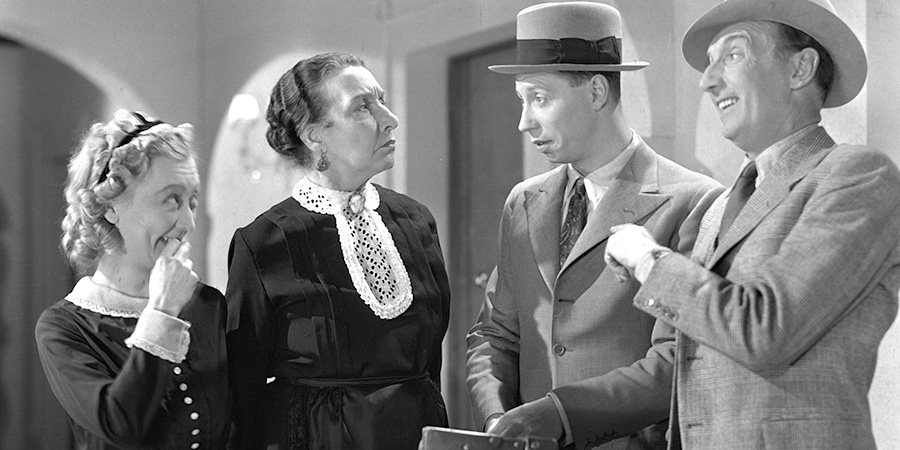
Television was another medium that valued her versatility. She made her BBCTV debut during November 1938 in a production of an Agatha Christie story, transmitted live from Alexandra Palace, called Love From A Stranger, and there were plans to use her again in a number of diverse broadcasts.
The arrival of war did little to slow her progress as an increasingly popular and admired character actor. Apart from continuing with her many appearances in the West End, she also travelled to various locations to help entertain British troops, and took part in several short films designed to promote a positive national spirit. In 1944 she joined the likes of David Niven, A.E Matthews, John Laurie, Leslie Dwyer, William Hartnell and Stanley Holloway in Carol Reed's patriotic drama The Way Ahead, playing the redoubtable wife of Holloway's character, a plumber-turned-soldier called Ted.
It was during this period that she met the man who would become her husband, a German-Jewish refugee named Ernst Littmann. One year her senior, Littmann, who worked as a lawyer, had fled to England from Essen in North Rhine-Westphalia several years before. How they first encountered each other remains one of those blank parts of her biography (other than via some or other show business gathering, there may have been a connection through her other activities, which included applying her considerable interior design skills to the homes of friends and acquaintances, and searching local antique shops for items to add to her large collections of old and rare china, tapestries and decorative bookplates), but it is clear that, once the relationship did begin, the bond between them was strong.
They would marry, on 5th September 1945, at Paddington register office. Esma gave birth to their only child, a son named Michael Anthony Littman, the following year.
Now in her forties and wanting more free time in the evenings to spend with her baby, she started to be more selective about her stage work, while more open to offers for minor roles on the screen. She returned to television in 1947 in a BBC play called Rotten Row, and during the same year not only reminded people of her dramatic talents with a powerful performance as the abused mute Lindy Wicks in the movie Jassy, but also began what would become a long association, via a series of cheap and cheerful comedy movies, with the film family known as the Huggetts.
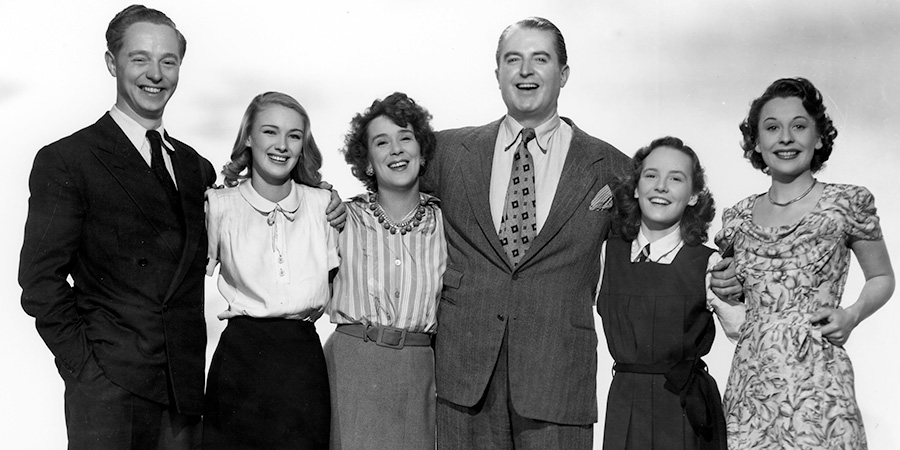
The number of productions that required her to portray servants or spinsters was even greater than it had been before the war, but at least now she had grown into some of these characters ('I used to be cast as fluttery young maids,' she reflected. 'Now I play fluttery old maids'), and was craftier than ever in finding ways to make the most of the limited screen time they were usually afforded.
The surprising thing, given how effective her performances always were, was how modest her stature in show business remained. An example was her contribution to Simon And Laura, a satire about an early TV reality show which started out in 1954 as a stage play. Her role, as Jessie the housekeeper, was quite a strong and substantial supporting part, and she won plenty of critical praise for how well she conjured up the character (and her performance was later reprised for a BBCTV broadcast of the production). When the play was made into a movie the following year, however, Jessie was re-cast, with Thora Hird getting the part, and Cannon was reduced to playing 'Laura from Newcastle' - a fan of her famous namesake who is given the chance to present her with a cake in front of the cameras.
Handed only one line - 'Pleased to meet you, I'm sure!' - and no more than a single minute of screen time, Cannon still manages, quite brilliantly, to make her mark on the movie. The character, who merely has to stand silently next to her idol whilst an interviewer conducts a one-on-one interview, could easily have been utterly forgettable, but instead Cannon produces a masterclass in scene-stealing that would surely merit a place, if such a category ever comes into existence, as one of British cinema's most magical minutes.
The secret is that she does not seem to try to make us watch her. She seems so in the moment, so in the role, that we cannot help but want to watch her.

First of all, she arrives on set looking terrified, with her strained face drained of colour and her hands shaking so much that her cake looks in danger of sliding straight off its plate. Then, as both the star and the interviewer proceed to act as though she isn't there, she stands nearby and listens intently, her body swaying slightly to signal how giddy with happiness she is feeling alongside someone so famous, and her face, forever being distracted from the camera by the lustre of the woman next to her, looking up adoringly and shifting its expression to mirror emotionally whatever her idol is saying.
When the star says something serious, Cannon's brow furrows sympathetically, her eyes crease into crescents and her lips creep up with concentration, and when the star says something lighter in spirit, the eyes start to sparkle and the mouth swings up into a smile, until, lost in the moment, she forgets herself, gives out a sudden supportive little giggle, and then, as if jolted from a dream, she hurriedly switches back to a serious stare for the camera.
The result - so outrageously, yet subtly, artful - is a perfect reversal of what the script might initially have suggested. This ostensibly throwaway character, who is only there to stand and stare, ends up as a treasurable presence, and the only thing one watches from the start to the end of the scene.
That is what Esma Cannon always did. Time and time again her talent was taken for granted, and yet her standards never slipped. She never sulked about being snubbed, side-lined, under-used or under-appreciated. She simply took whatever scraps that she was given and gilded them with gold.
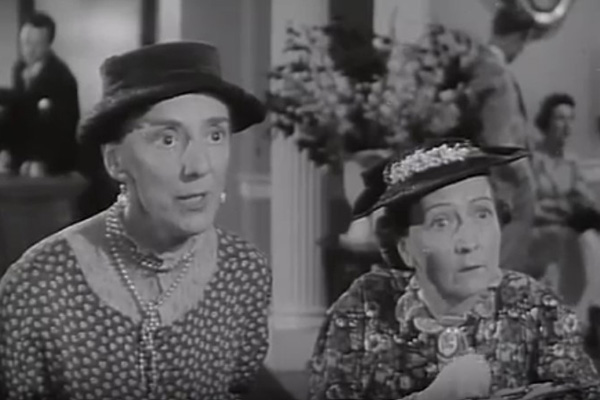
It was an art as admirable in its own way as any executed by a screen-hogging star. A foreground is only as real as its background is rich, and Esma Cannon, every time that she was allowed to shape a small detail, made the big picture seem a little more vivid and interesting.
This mischievous miniaturist seemed to flit in and out of consciousness for British filmgoers throughout the rest of the Fifties, whilst imposing herself subtly but strongly into their deeper memories. She featured very briefly, for example, as a theatre-loving hotel guest in A Touch Of The Sun (1956), sharing a scene with Frankie Howerd (whom she gazes up at in awe: 'You're a marvel!'); in a more substantial role, she bounced quite brilliantly off Peggy Mount as her bullied sister-in-law, Edie, in Sailor Beware (also 1956), with her careworn hair practically vibrating with fear at each fog-horned onslaught (although, frustratingly for her as well as us, the character didn't really go anywhere other than around and around the hamster wheel of comedy cliché); and she formed a delightful double act with Amy Dalby for Further Up The Creek (1958), where they played a pair of elderly but very impish sisters, the matching beret-wearing and bag-clutching Eadie and Maudie, who have finally left Leamington Spa in search of sea-based adventure (any whiff of 'wickedness' has them fluttering like moths to a flame).
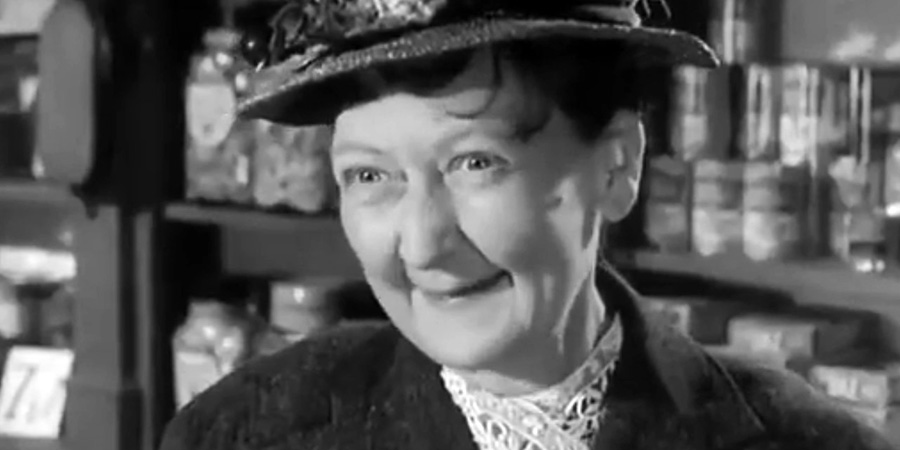
She had an even briefer but more dramatic role as Nelly, the battered and drunken prostitute, in Jack The Ripper (1959), shouting up at the policeman, and a similarly short but lighter part as Spencer, the dutiful maid, in I'm All Right Jack (1959). She also excelled in her all-too brief scenes for the movie Inn For Trouble (1960, a big screen outing for hit ITV sitcom The Larkins), where she interacted beautifully with that other charmingly sly comic performer Irene Handl as Dolly, a customer so trusted that she is selected to confirm that the slab that looks like cheese is actually soap (''Ere, Dolly, do wanna taster?' 'Oooh, yes, lovely...Urgh!' 'Ah, that'll be the soap, then').
Her most-watched and enduringly popular cameo performances, however, came in the Carry On movies. Without ever being treated to more than a tiny amount of time on screen, she still managed to shine so brightly in a succession of these titles that she ended up being celebrated for the comic contributions that she still contrived to make.
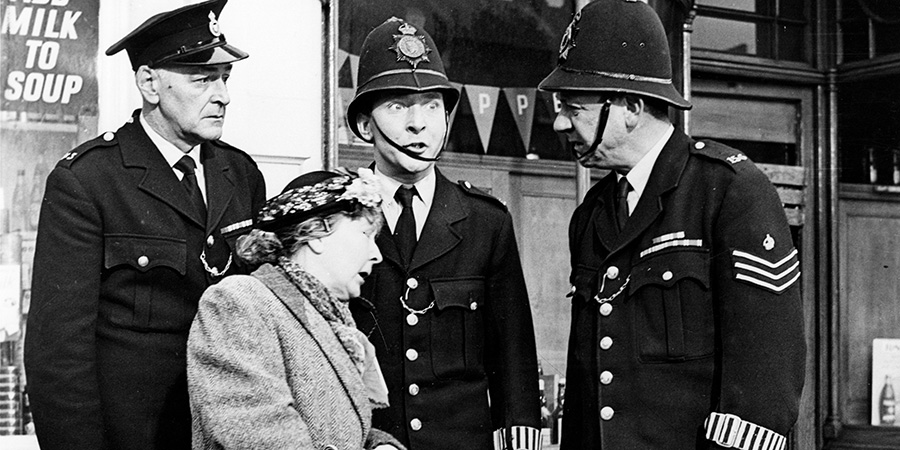
Her first appearance came in the fourth movie in the series: Carry On, Constable in 1960. Billed merely as 'Deaf Lady', it was again, on paper, an uninspiring engagement, but, as usual, Cannon commanded the camera throughout her brief scene, zig-zagging her way precariously across a busy road, and then, after a well-meaning policeman (Kenneth Williams) misunderstands the situation and escorts her straight back from whence she came, she hits him repeatedly about the head and helmet with one of her crusty baguettes.
It must have made her seem like an irresistible actor for these movies. She was professional enough to get things right on the first take, she was clever enough to make less seem like more, and she never complained about her pay. With that first swing of the baguette, therefore, she broke into the brand.
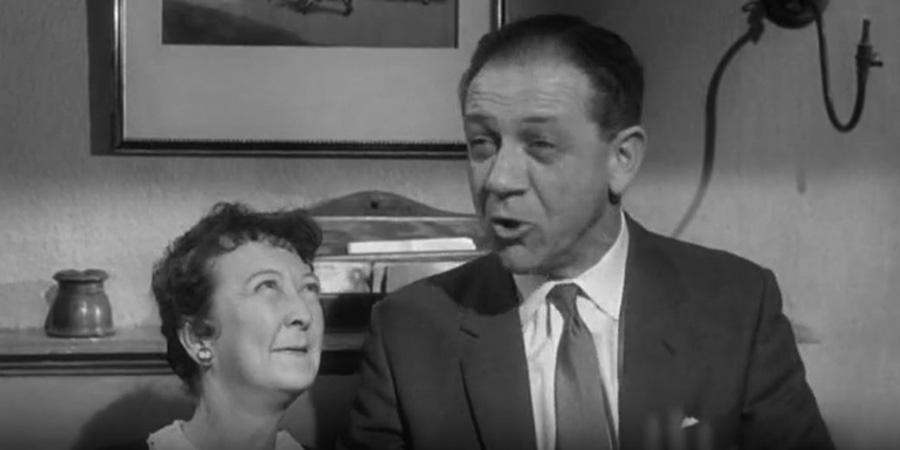
She thus returned the following year as the committed Miss Cooling in Carry On Regardless, and then was back again in 1962 for Carry On Cruising as the defiantly boozy Bridget Madderley. Both performances were far more nuanced than either the screenplay or the direction deserved them to be, with Cannon investing them with a complexity and vulnerability that made them intriguing and even rather touching as well as consistently funny.
Her treatment of Bridget, especially, is impressively clever and sensitive, dutifully doing her best to deliver all the laughs while still evoking a sly sense of the sadness that really surrounds this lonely creature. Ignored by the captain even when she is standing right under his chin, going swimming alone wearing an ancient-looking bathing dress and almost drowning, and then settling herself at the bar basically because of an absence of invitations to do anything else, she starts downing the drinks as if being introduced to a succession of exotic new friends ('Such an enigmatic label!').
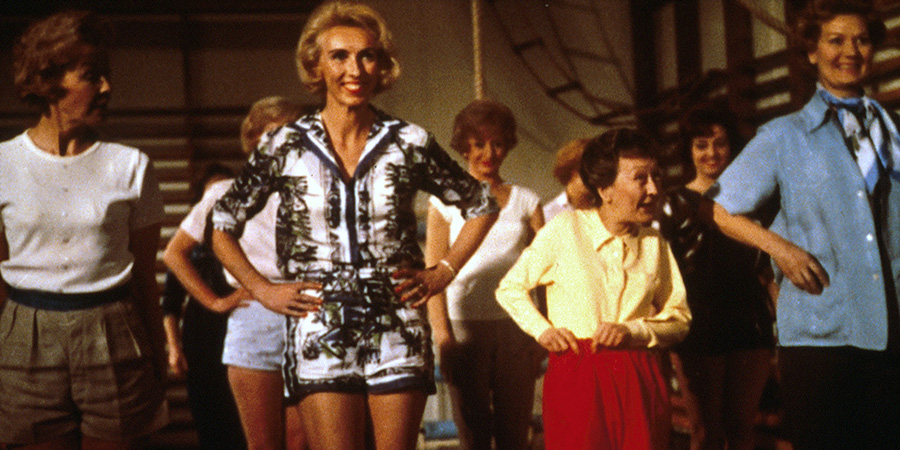
It could have been a glib and even quite cynical little scene, but Cannon plays the character with such care and charm (note, for example, the way she instinctively adjusts her hemline when struggling to perch, still drenched, on the bar stool, or gazes so gratefully at the faces of her new friends when they join her, or lets her eyelids start slipping down, just slightly, as the drink begins taking effect) that she is never seen simply as a figure of fun.
Her fourth appearance in the series would be as Flo Sims in Carry On Cabby in 1963. First seen as a nervous-looking but defiant rookie taxi driver surrounded by a crowd of angry male cabbies ('She's taking a man's job!'), she is a much more naturalistic sort of character by Carry On standards, and - even more of a rarity - Cannon is able to use (more or less) her own tone of speaking voice for the part. Hired in spite of the dinosaurs' attempts to block her, she becomes, along with Hattie Jacques's character Peggy, the feminist focus of the movie ('Men? They're only good at one thing - and they wouldn't be much good at that without us!'), as well as its heart.
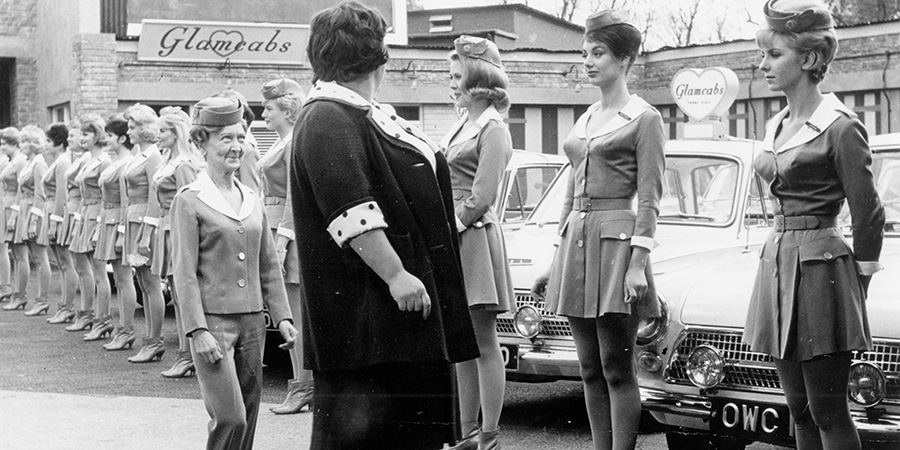
Working beautifully alongside the equally impressive Jacques as the two women behind Glamcabs, Cannon is superb throughout what is one of her most substantial and subtle comedy roles. It is also one of her most integrated, with her character - smart, strong and sensible - being allowed to be part of the core story rather than merely an entertaining digression.
It was her best Carry On role so far, demonstrating once again her skill and versatility, as well as adding to the multiple ways in which she was capable of enhancing future instalments, and it is thus a great shame that Cabby would turn out to be her final contribution to the series. The reason why her involvement ended would be due at least in part to the competing demands on her time of television.
Ever since its arrival on the screen in 1961, the BBC sitcom The Rag Trade had brought Esma Cannon into the homes of millions of TV viewers every week, and made her a household face, if still not quite a household name. Playing the role of Lily Swann, intended initially as more of an occasional sidekick than a central character, her scene-stealing skills kept building up her part.
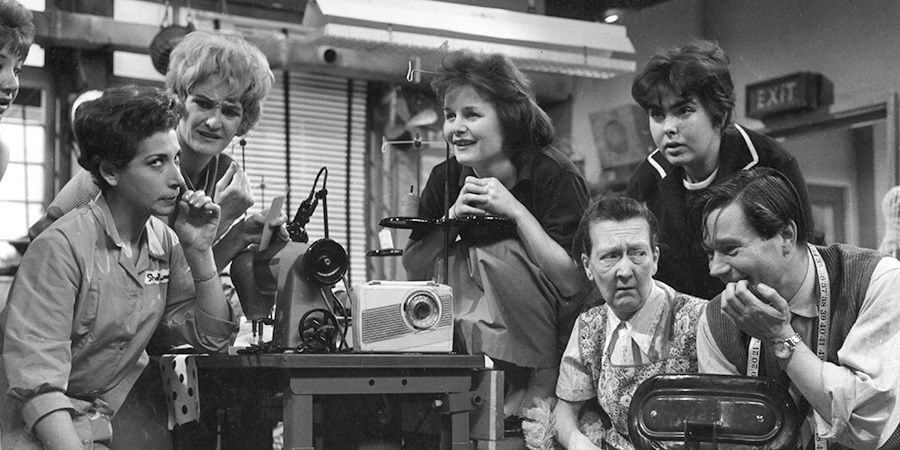
She had been appearing on the West End stage in Watch It, Sailor (a sequel to Sailor Beware) when Ronald Chesney, one of the writers of the then-forthcoming sitcom, and Dennis Main Wilson, his BBC producer (late of The Goons and Hancock's Half Hour), having been tipped off as to her suitability for the show, went to see her in action. She was reprising her role as Edie, the scatter-brained and put-upon aunt, winning far more laughs than the part seemed to deserve, and the two men loved her performance so much that they had a character created especially for her in their new show.
'She was this tiny squidge of a lady,' Main Wilson later said, 'with the nervous fingers and all of that, and this was somebody whom, when she worked, got a laugh on every line that she did. Every single line. She had something with an audience. She won them. She mesmerised them. She was dithering, nerves everywhere, getting laughs all over the place, so clever. She was brilliant.'
The show was, in keeping with Main Wilson's ongoing turbo-charged assault on the Establishment, joyously progressive, with a working-class environment, a mainly-female focus and plenty of topical themes relating to industrial unrest. Aside from the hapless boss, played by Peter Jones, and his foreman, essayed by Reg Varney, the cast (very unusually for the time) consisted of several talented women, playing a team of cutters, stitchers, seamers and machinists at a small London clothing workshop called Fenner's Fashions.
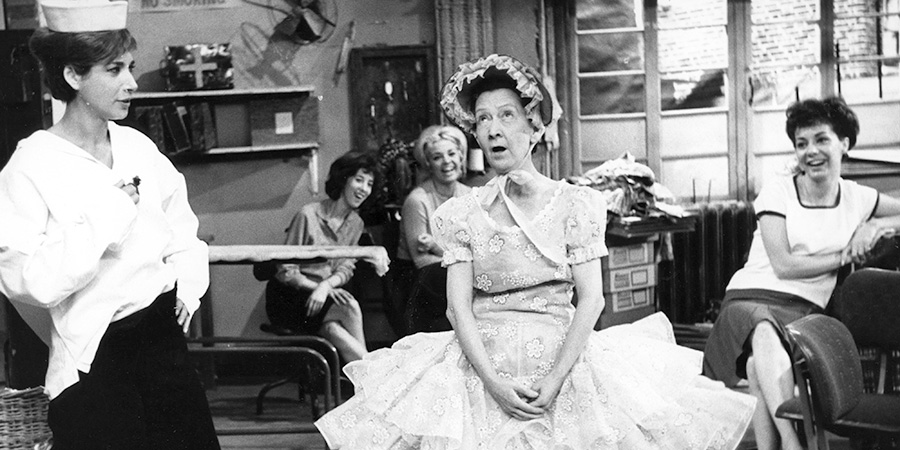
Cannon, as 'Our Lil' (as both the cast and the public came to address her), was the seamstress who still sews buttonholes with assurance, but has never quite been the same since zips came in; a nice but nervous, easily-panicked person whose eagerness to please often propelled her into embarrassing situations, such as being stuck at the top of a lamppost (where she was sent to fix a fuse) or trapped in a clothes bag (where she was scared into hiding in order to dodge the boss). It was a good role for Cannon to immerse herself within - she always made her own clothes in real life, having grown frustrated by being limited in shops to buying children's clothes off the peg ('my size is the same as for age eleven'), and even tended to sit and sew in her dressing room while waiting to perform in theatres or studios - and, yet again, she proved exceptionally deft at remaining believable in spite of the slapstick nature of some aspects of the scripts.
Dubbed by reviewers 'one of the show's smash hits', the character became, for a while, one of the small screen's most engaging underdogs, attracting sympathy and support for her class, her size, her age and her gender. She got flustered but she fought on, she fell into trouble but found a way back out again, and she always kept her kindness. Audiences laughed at her but also loved her, and one newspaper even hailed her as a 'national institution'.
Lily brought Cannon a level of fame that she had neither expected nor particularly wanted. Always a very private person, she was unnerved by the increased press attention that her involvement in the show elicited ('Nothing like it has happened to me in all my stage career'), and usually politely declined requests for interviews (as well as the annual invitations to be in Who's Who In The Theatre), and was both bewildered and rather touched by the piles of fan letters that she had started receiving (not only from viewers in Britain but also her native Australia, where the sitcom was just as huge a hit). She was actually somewhat relieved, therefore, when, after completing two series of The Rag Trade, she was invited to appear in a spin-off stage version instead.
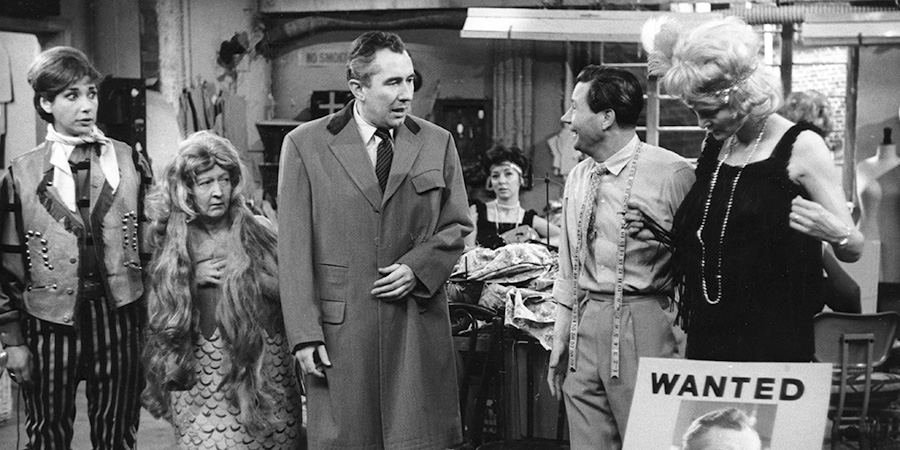
It would, she reasoned, give her some breathing-space after the relentless slog of being part of a popular television production, as well as affording her more time with her family. 'You know,' she said in a rare chat with the press, 'I have got a wonderful husband. And I have got a wonderful son. They run the house when I am working. But I think it would be a bit much to expect them to do it indefinitely. So although I like the money, I have to think of my family.'
The stage version of The Rag Trade, at London's Piccadilly Theatre, opened in December 1962 and lasted until the end of February 1963. She could, in theory, have returned to the TV show (which was now back for a third series but with several episodes still to be filmed), but she had had her fill of that kind of fame.
The truth was that, as she was nearing her sixties, she was beginning to crave a quieter, calmer life. She thus decided, after completing yet another frustratingly under-written role as a 'tea lady' in the 1964 movie Hide And Seek, to retire from performing. Typically of this most modest of people, there was no public announcement; she simply stopped accepting offers and quietly faded from view.
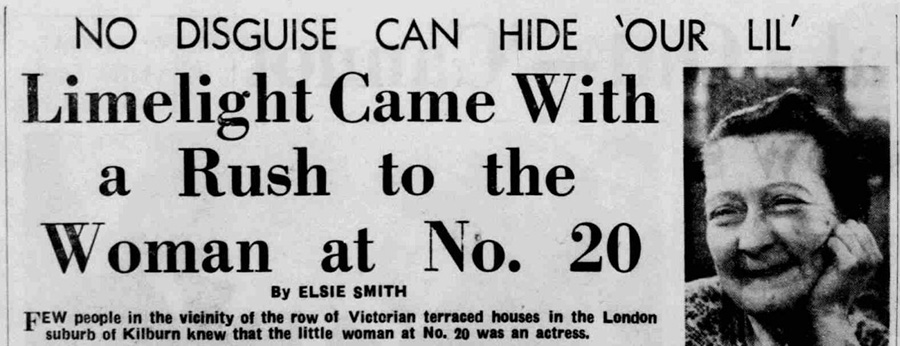
Although they would keep the home they owned in London (at 20 Priory Road in Camden), she and her family moved to a small but elegant house in Saint-Benoît-la-Forêt, in the département d'Indre-et-Loire in central France. Locals would later be surprised to find that the cheerful and friendly woman they had known there had formerly been a well-known actor; they said that she never, ever, mentioned her past, and simply lived, modestly but happily, in the present.
She died in France, early on the morning of 18th October 1972, at the age of sixty-six. So complete had been the closure from her past that most of her friends and fans back in England (and Australia) would not know of her passing until about a year or so later, when word finally reached a few of her old neighbours in Camden via her grieving husband.
It was, it seems, how she had wanted it to be. Her private life remained private, while her performances were allowed to live on.
Esma Cannon herself deserves, nonetheless, to be warmly remembered as a truly gifted comic performer. Not only a great stealer of scenes, but also a fine provider of pleasure, she left behind many little details that continue to have a big impact, commanding our attention, admiration and affection.
Help us publish more great content by becoming a BCG Supporter. You'll be backing our mission to champion, celebrate and promote British comedy in all its forms: past, present and future.
We understand times are tough, but if you believe in the power of laughter we'd be honoured to have you join us. Advertising doesn't cover our costs, so every single donation matters and is put to good use. Thank you.
Love comedy? Find out moreThe Rag Trade - Series 1 & 2

The Rag Trade is a true British comedy classic that attracted enormous audiences when first broadcast in 1961. Widely praised not just for its hilarious script and energetic performances, but for its ground-breaking strong female characters, and loved for iconic catchphrase "Everybody out!", the sitcom has earned its place in TV comedy history.
Penny-pinching Harold Fenner (Peter Jones) runs Fenner Fashions, a small clothing workshop in London that makes high quality clothing, but nothing ever runs smoothly. Work life is constantly disrupted by the shop's militant steward Paddy Fleming (Miriam Karlin), who leads the female workforce. Paddy is after any excuse to take on Fenner and lead the women out on strike, yelling "Everybody out!".
Amongst the long-suffering workforce are Carole (Sheila Hancock), Little Lil (Esma Cannon), Shirley (Wanda Ventham) and Gloria (Barbara Windsor). And stuck in the middle of the whole situation is poor downtrodden foreman Reg (Reg Varney), trying to keep everyone happy and failing miserably!
The series was created and written by Ronald Wolfe and Ronald Chesney (On The Buses).
First released: Monday 23rd October 2017
- Distributor: Simply Media
- Region: 2
- Discs: 4
- Minutes: 480
- Subtitles: English
- Catalogue: 169693
![]() Buy and sell old and new items
Buy and sell old and new items
Search for this product on eBay
BCG may earn commission on sales generated through the links above.
Simon And Laura

Multiple-award-winning screen legend Peter Finch stars alongside Kay Kendall, Muriel Pavlow and Ian Carmichael in this whimsical satire on then-BBC programming that prefigures the current reality TV landscape by fifty years! Adapted from Alan Melville's hit West End play and directed by Oscar-winner Muriel Box, Simon And Laura is featured here as a brand new high definition remaster from original film elements in its original theatrical aspect ratio.
A cunning idea for a new television programme showing the trials and tribulations of a famous married couple seems a sure-fire hit. But this perfect couple with their perfect life also argue, bicker and throw things at each other regularly when no-one is watching... Can they keep up their façade for the viewing millions?
First released: Monday 2nd August 2021
- Distributor: Network
- Region: B
- Discs: 1
- Minutes: 91
- Subtitles: English
- Catalogue: 7958375
![]() Buy and sell old and new items
Buy and sell old and new items
Search for this product on eBay
BCG may earn commission on sales generated through the links above.
- Distributor: Network
- Region: 2
- Discs: 1
- Minutes: 88
- Subtitles: English
- Catalogue: 7956189
![]() Buy and sell old and new items
Buy and sell old and new items
Search for this product on eBay
BCG may earn commission on sales generated through the links above.
Carry On - Collection 1

Begin your journey through the annals of the Carry Ons, Britain's longest-running comedy film series, with this 4-disc Blu-ray set featuring the first 4 films of the uproarious franchise - in high-definition for the first time anywhere in the world.
Carry On Sergeant (1958)
For six years Sergeant Grimshawe has been a training sergeant but never the proud leader of a Star Squad. He accepts a bet from another sergeant that in the next intake, his last before retirement, his squad will pass out top. But when he's lumbered with a motley crew of inductees, Grimshawe suspects he hasn't a chance of winning the bet.
Carry On Nurse (1959)
The men's surgical ward of the Haven Hospital is staffed by an energetic nursing team under the watchful eye of Matron. Their suty time is taken up not only with nursing, but in attempting to control the riotous "shower" of patients who are always up to some prank or other. They also have to contend with the amorous advances of the patients!
Carry On Teacher (1959)
Acting Headmaster William Wakefield decides to apply for a post at a new school after 20-years service at Maudlin Street Modern School. Before he can leave he must deal with a visit by a Ministry of Education Inspector, but when a senior boy pupil overhears Wakefield plans to leave at the end of term, he and his school chums plan to sabotage every endeavour that might earn Wakefield praise.
Carry On, Constable (1960)
Because of a flu epidemic, three police constables straight from college are sent to a local constabulary as temporary replacements. But their Inspector soon discovers the new recruits are pretty a hopeless bunch and issues orders the quartet are to be accompanied on duty - not that it helps matters!
First released: Wednesday 9th November 2022
- Distributor: Via Vision
- Discs: 4
- Minutes: 342
- Catalogue: VVE3258
![]() Buy and sell old and new items
Buy and sell old and new items
Search for this product on eBay
BCG may earn commission on sales generated through the links above.
The Carry On Girls

Far more than mere eye candy, these in-control, hard-working, and pioneering ladies were an early and earnest manifestation of Girl Power in the British film industry. This book provides an invaluable celebration of the highly talented and forever decorative screen sirens that bewitched Carry On heroes Sid James, Kenneth Connor, Leslie Phillips, Bernard Bresslaw, Jim Dale, Peter Butterworth and, yes, even, Kenneth Williams.
Through never-before-seen publicity material, exclusive interviews with the girls themselves and affectionate biographies by Carry On historian Robert Ross, this will be the most thumbed coffee table book ever to hit your coffee table!
Soap opera favourites Amanda Barrie (Alma in Coronation Street) and Wendy Richard (Pauline Fowler in EastEnders), Bond girls Margaret Nolan, Madeline Smith and the Goldfinger star herself, Shirley Eaton, as well as international glamour stars Elke Sommer and Dany Robin, feature in candid interviews and stunning portrait shots.
This is a long overdue salute to dozens of beloved Carry On actresses, from the courageous Liz Fraser to the ill-fated Imogen Hassall, and from the national treasure Barbara Windsor to the unfairly forgotten Sally Douglas. Each with a poignant and personal memory from fellow Carry On legend Valerie Leon, who provides her own unique and exclusive commentary.
The book also investigates the continuing cult of the Carry On girl, from Daniella Westbrook's Carry On London photographic sessions to Page 3 girl Malene Espensen paying tribute to the Carry On Camping bra-burst of Barbara Windsor. All done in the best possible taste, of course, with the affection and joy that still makes the Carry On films the eternal toast of ITV3 and BritBox.
The book further features a wealth of illustrations ranging from cheesecake shots for Tit-Bits to relaxed behind-the-scenes poses with Carry On filmmakers Peter Rogers and Gerald Thomas and comedy legends such as Phil Silvers, Harry H. Corbett, Bob Monkhouse and Bernard Cribbins.
Full of intimate tales from the sound stages of Pinewood Studios, snapshots of a lost industry and oodles of laughs, this is the ultimate tribute to a fun-filled era when British crumpet was at its spiciest!
First published: Thursday 23rd November 2023
- Publisher: The History Press
- Pages: 224
- Catalogue: 9781803993409
![]() Buy and sell old and new items
Buy and sell old and new items
Search for this product on eBay
BCG may earn commission on sales generated through the links above.
- Publisher: The History Press
- Catalogue: 9781803993416
BCG may earn commission on sales generated through the links above.

